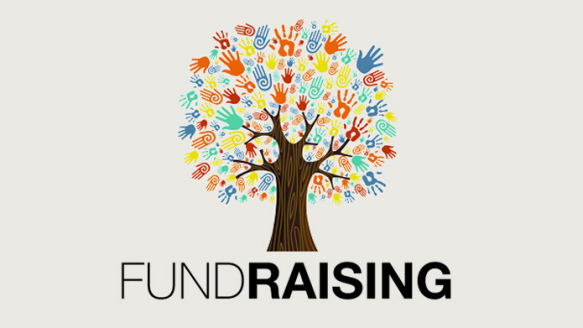Fundraising Consultant: Increase Your Nonprofit's Profits with Professional Aid
Fundraising Consultant: Increase Your Nonprofit's Profits with Professional Aid
Blog Article
The Role of Area Interaction in Nonprofit Fundraising: Building Lasting Relationships for Lasting Assistance
Neighborhood interaction is significantly acknowledged as a critical element of effective nonprofit fundraising. By fostering real relationships with local stakeholders, organizations can grow count on and loyalty, which are important for sustainable assistance. However, the methods and strategies used to involve neighborhoods vary extensively, raising vital questions about effectiveness and influence. What are the ideal techniques for cultivating these necessary connections, and just how can nonprofits gauge their success in this sector? Understanding these dynamics might dramatically affect the future of fundraising initiatives and the overall goal of nonprofit companies.
Comprehending Area Interaction
Community engagement is a crucial element of effective nonprofit fundraising initiatives. It refers to the methods and tasks that organizations use to connect with their regional areas, cultivating relationships that are equally valuable. Understanding neighborhood interaction entails recognizing its complex nature, that includes engagement, outreach, and partnership. Nonprofits should determine crucial stakeholders-- such as area members, regional businesses, and other companies-- to develop efficient involvement techniques.
Reliable area interaction is asserted on active listening and responsiveness to the needs and passions of the area. This process includes getting responses, recognizing area dynamics, and making certain that the organization's goal aligns with neighborhood concerns. Engaging the community can take various forms, consisting of public conferences, volunteer opportunities, and partnership campaigns, each designed to urge involvement and investment in the company's objectives.
In addition, neighborhood interaction should be approached as a recurring discussion rather than an one-time initiative. By fostering an inclusive environment where area voices are heard and valued, nonprofits can build a solid foundation for future fundraising undertakings. Inevitably, a deep understanding of neighborhood involvement empowers organizations to develop authentic connections that enhance their overall performance and sustainability.
Benefits of Strong Relationships
Solid partnerships developed through neighborhood interaction yield numerous advantages for nonprofit fundraising initiatives. Most importantly, these partnerships foster trust fund and reputation, essential parts in encouraging benefactors to contribute. When possible advocates see a not-for-profit proactively entailed in their neighborhood, they are most likely to think in its mission and effect.

Additionally, these connections help with efficient communication. Nonprofits can leverage their connections to share tales of effect, updates, and needs, making sure that fans remain educated and involved. This open line of interaction not just strengthens bonds but additionally urges referral promo, expanding the not-for-profit's reach.
Finally, solid area connections can draw in new partners and enrollers. Individuals and organizations are more inclined to line up with companies that show meaningful community involvement, supplying added sources and support that can dramatically enhance fundraising abilities. Thus, growing durable relationships with neighborhood interaction is integral to a nonprofit's long-lasting fundraising success.
Strategies for Effective Engagement
How can nonprofits efficiently engage their communities to boost fundraising efforts? Normal updates, engaging web content, and calls-to-action can galvanize community interest and involvement.
2nd, holding neighborhood occasions, such as workshops, volunteer opportunities, or fundraising drives, facilitates in person communication, enabling nonprofits to display their influence and efforts. These occasions not only increase funds but likewise cultivate connections and allow neighborhood participants to involve straight with the cause.
Third, executing individualized interaction approaches can enhance engagement. Tailoring messages to certain donor sectors based upon passions and previous contributions fosters a feeling of belonging and financial investment in the company's objective.
Finally, producing collaborations with neighborhood organizations and neighborhood leaders can amplify outreach efforts. Collaborative initiatives can boost best site exposure and credibility, showing a cumulative commitment to the area's well-being. By incorporating these methods, nonprofits can build long lasting partnerships that enhance fundraising initiatives and drive lasting support.
Gauging Involvement Success
While involving the neighborhood is essential for effective nonprofit fundraising, gauging the efficiency of these involvement efforts is equally vital. Developing clear metrics enables companies to examine just how well they are connecting with their audience and attaining their fundraising goals. Key efficiency indications (KPIs) such as donor retention prices, volunteer involvement levels, and interaction on social media platforms supply tangible information for evaluation.

Regularly assessing these metrics enables organizations to pivot their techniques when required, making sure that neighborhood involvement stays aligned with their general objective. Additionally, sharing these results with stakeholders cultivates openness and develops trust fund, encouraging further area involvement. Inevitably, a durable measurement framework not just notifies future fundraising initiatives however additionally enhances the relationship between the nonprofit and its supporters, laying the groundwork for sustainable find more information success.
Study in Community Effect
Numerous study highlight the extensive influence that community involvement can have on not-for-profit fundraising success. One remarkable instance is the "Food for Idea" effort, where a regional food bank partnered with services and institutions to host community suppers. These events not only raised funds but likewise promoted a feeling of belonging amongst participants, significantly boosting benefactor retention prices.
Another compelling situation is the "Green Spaces Job," which included neighborhood citizens in the revitalization of city parks. This initiative read more not only amassed financial backing from neighborhood companies however additionally grew a volunteer base that contributed to continuous upkeep and programming. The feeling of ownership and satisfaction amongst community members equated right into continual payments.
In the realm of arts, the "Art for All" project successfully involved neighborhood musicians and customers to produce collaborative art installments, bring about boosted visibility and donations for a local arts nonprofit.
These examples highlight that when nonprofits focus on neighborhood involvement, they can produce enduring connections that boost fundraising initiatives, guaranteeing sustainable support and fostering a lively community society. Such situations show that neighborhood interaction is not merely a technique however an essential column of nonprofit success.
Verdict
In verdict, area interaction is indispensable to the success of not-for-profit fundraising efforts. Eventually, a durable structure of neighborhood assistance not only amplifies fundraising possible but also grows a society of collaboration, essential for attaining lasting organizational goals and maintaining meaningful influence. fundraising consultant.
Nonprofits need to recognize key stakeholders-- such as area members, neighborhood services, and various other organizations-- to develop effective engagement strategies.

In verdict, neighborhood involvement is essential to the success of not-for-profit fundraising efforts.
Report this page